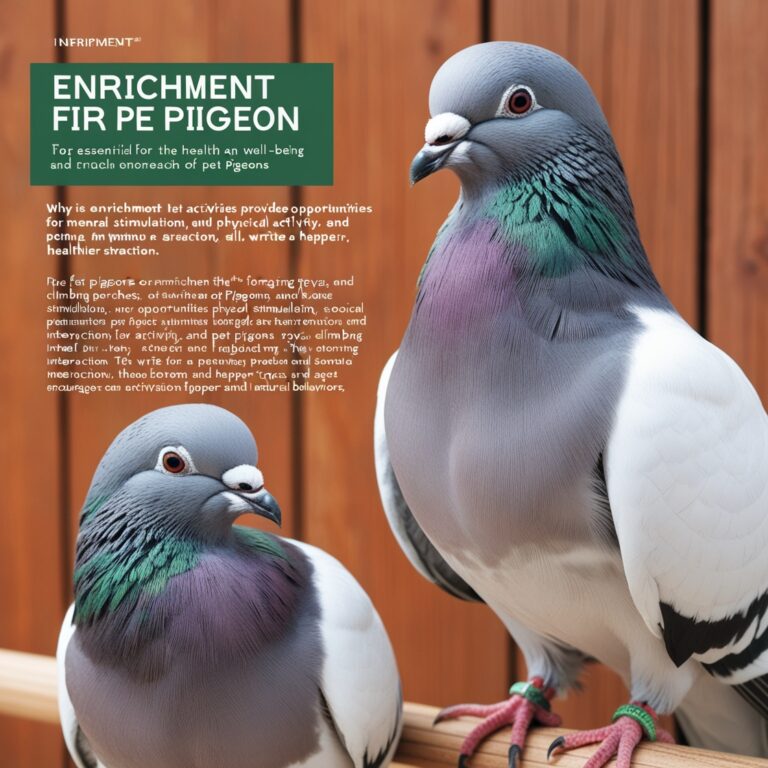Importance of Patience in pet
Importance of Patience in Building a Bond
Importance of Patience in pet When building a relationship with a pigeon, patience is key. Like many animals, Pigeons need time to adjust to new environments and people. They are naturally cautious creatures that may not immediately respond to a child’s attempts to engage with them. This is where patience becomes crucial. Children should understand that pigeons may take time to feel safe and comfortable. The bond won’t happen overnight, and it’s important not to rush the process. Teaching children to be patient during this period helps them learn how to respect the pigeon’s pace, allowing the bird to approach them when it feels ready. Building a relationship with a pigeon requires patience. Like many animals, pigeons need time to adjust to new surroundings and people. Pigeons are naturally cautious and may not instantly respond to attempts at interaction. This is where patience plays a critical role, especially for children trying to form a bond with their pets. Children should be taught that pigeons may take some time to feel safe and comfortable in a new environment. It’s essential to help kids understand that the bond with their pigeon won’t form overnight. Rather than rushing the process, children should be encouraged to allow the pigeon to set the pace. Forcing interactions too soon could make the pigeon anxious, potentially slowing down the bonding process. By teaching children to wait patiently, they learn an important lesson about respecting their pigeon’s boundaries. Encouraging children to be calm, gentle, and consistent in their interactions helps build trust over time. The pigeon will eventually feel more secure and may approach the child when it’s ready. This gradual process of trust-building not only benefits the pigeon but also helps children develop a deeper sense of empathy and responsibility, strengthening their bond with the bird Importance of Patience in pet.
Developing Trust Gradually
Trust is the foundation of any meaningful relationship, and this is particularly true for animals. For pigeons to trust a child, they need to feel that they are in a safe and calm environment. The child must learn to interact gently and consistently, allowing the pigeon to observe them before attempting physical contact. Initially, the pigeon may be hesitant to come close or engage. It’s essential to reassure children that this is normal and to encourage them to keep interacting with the bird in a calm, quiet manner. Over time, the pigeon will begin to trust the child’s presence and may even approach them for food or gentle handling. Trust is a crucial aspect of any relationship, and this holds especially true when bonding with animals like pigeons. For a pigeon to trust a child, it must first feel secure in its environment. Creating a calm and safe space is essential to help the pigeon feel comfortable. Children need to understand that their interactions with the bird should be gentle and consistent, allowing the pigeon to observe them without feeling threatened. At first, pigeons may be reluctant to approach or engage. This hesitation is natural, and it’s important to teach children that patience is key during this time. Encouraging calm and quiet behavior helps the pigeon gradually feel more at ease. Children can continue to interact with the pigeon daily, maintaining a routine that allows the bird to familiarize itself with their presence. As the pigeon begins to feel more comfortable, trust will slowly develop. Over time, the bird may approach the child for food or even accept gentle handling. This gradual process not only builds trust but also strengthens the bond between the child and the pigeon. By fostering patience and calmness, children learn the value of nurturing a relationship at the animal’s pace, creating a deeper, more meaningful connection.

Teaching Children to Stay Calm
Another aspect of patience is helping children maintain calmness during interactions. Pigeons are sensitive to sudden movements and loud noises, which can scare them. Teaching children to stay still and use a quiet voice around their pigeon reinforces the idea that building trust takes time and requires gentle behavior. This helps create a peaceful atmosphere where the pigeon feels safe and eventually comfortable enough to interact with the child.
Encouraging Empathy Through Animal Care
Caring for a pet, such as a pigeon, provides a great opportunity to teach children empathy. Empathy is the ability to understand and share the feelings of another. By helping children recognize the needs of their pigeon, they begin to learn how to respond to the emotions and comfort levels of their pet.
Recognizing Pigeon Body Language
One of the best ways to develop empathy is by teaching children to understand pigeon body language. Pigeons communicate through subtle cues, and by learning to recognize these signals, children can adapt their behavior accordingly. For instance, a pigeon that is fluffed up, calm, and cooing is likely feeling comfortable. However, if the pigeon flaps its wings quickly, hisses, or backs away, it is likely feeling frightened or stressed.
By identifying these behaviors, children can understand how the pigeon is feeling and respond appropriately. This awareness fosters empathy, as the child learns to care for the pigeon’s emotional well-being.
Teaching Children Responsibility Through Empathy
Empathy also comes from understanding the responsibility that comes with caring for another living being. By involving children in the daily care of their pigeon—feeding, cleaning, and providing fresh water—children learn that their actions directly affect the bird’s health and happiness. When children realize that the pigeon depends on them for its well-being, they begin to empathize with its needs and take on a nurturing role.
In this way, caring for a pigeon teaches children how to be responsible and sensitive to the needs of others, laying the foundation for emotional intelligence and compassion.
Explaining the Learning Process to Children
It’s important to explain to children that pigeons, while intelligent, may take time to learn new behaviors or to trust new people. This understanding is essential to managing their expectations and preventing frustration.
Understanding the Pigeon’s Learning Curve
Pigeons, like most animals, learn through repetition and consistency. Explaining to children that pigeons need time to adapt to their surroundings and interactions helps set realistic expectations. For example, a pigeon may not immediately respond to a child’s efforts to hand-feed it or come close when called. It’s crucial to reinforce that this is part of the bird’s natural learning curve.
Children should be encouraged to maintain a routine, interacting with the pigeon daily, so that the bird can gradually become more comfortable. Over time, the pigeon will begin to associate the child’s presence with positive experiences, such as feeding or gentle petting.
Encouraging Perseverance
The key to helping children understand the pigeon’s learning process is to foster perseverance. Children may become discouraged if the pigeon doesn’t respond to their efforts right away. It’s important to remind them that building trust and forming a bond is a gradual process. Celebrating small successes, such as the pigeon approaching for food or showing signs of relaxation, helps keep children motivated and patient.
Celebrating Milestones in Bonding
As the bond between the child and pigeon grows, it’s essential to celebrate the milestones that demonstrate progress. Recognizing and celebrating these achievements encourages children to continue building their relationship with the pigeon.
Small Victories, Big Rewards
Every small step in bonding with a pigeon is a victory, and it’s important to acknowledge these moments. For instance, the first time the pigeon perches on the child’s hand or allows gentle petting is a significant milestone. These moments show the child that their patience and kindness are paying off, reinforcing the positive behaviors that will continue to nurture the bond.

Children should be encouraged to notice these milestones and take pride in them. This fosters a sense of accomplishment and deepens their connection with the pigeon. It also helps children develop a positive attitude toward the process of forming relationships, both with animals and with others.
Using Positive Reinforcement
Another effective way to celebrate milestones is through positive reinforcement. Just as pigeons respond well to treats and rewards, children can benefit from positive feedback when they make progress in bonding with their pet. Praising children for their efforts, whether it’s through kind words, a small reward, or simply recognizing their hard work, helps keep them engaged and motivated.
Building Empathy and Emotional Intelligence Over Time
The process of bonding with a pigeon is not only about building a relationship with the bird but also about developing emotional intelligence in children. By nurturing patience, empathy, and responsibility, children learn important life skills that will benefit them well beyond their interactions with their pet.
Long-Term Benefits of Empathy
Children who learn to empathize with animals are often better equipped to empathize with people. The care and understanding required to bond with a pigeon translate into a broader capacity for compassion and kindness. This emotional intelligence can help children in their relationships with family, friends, and peers, making them more attuned to the needs and feelings of others.
Instilling a Lifelong Love of Animals
In addition to fostering emotional intelligence, bonding with a pigeon can also instill a lifelong love of animals. Children who form deep connections with pets often carry that affection into adulthood, advocating for animal welfare and continuing to care for animals throughout their lives.
Conclusion
Fostering patience and empathy in children through their relationship with pigeons is a deeply rewarding experience. By teaching children to understand their pet’s needs, to respect the pigeon’s pace, and to celebrate the small milestones along the way, parents can help their child develop important life skills that will last a lifetime. The bond formed between children and pigeons is not just about caring for a pet—it’s about building a foundation of empathy, patience, and emotional intelligence that will benefit both the child and their feathered friend for years to come.







